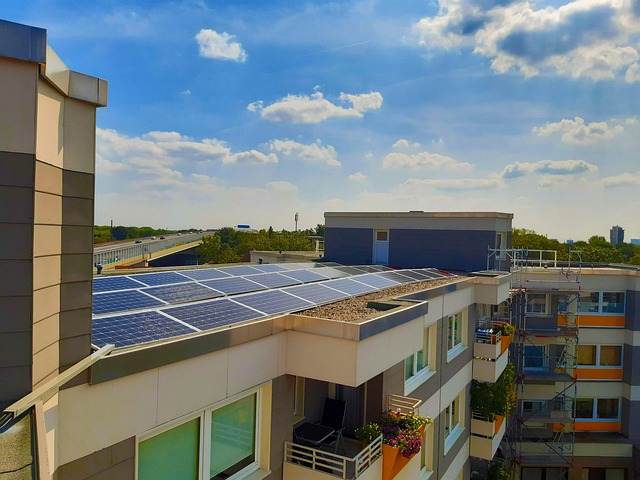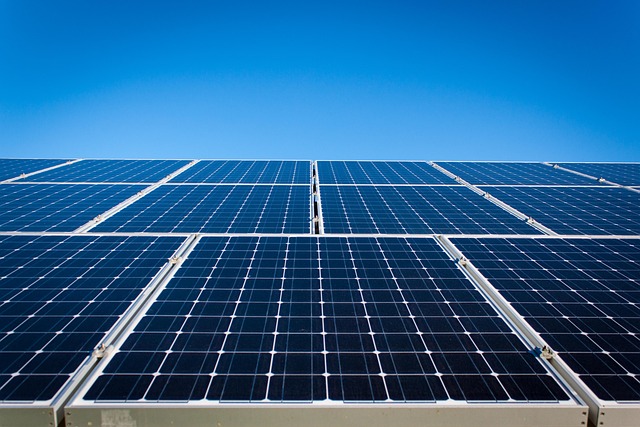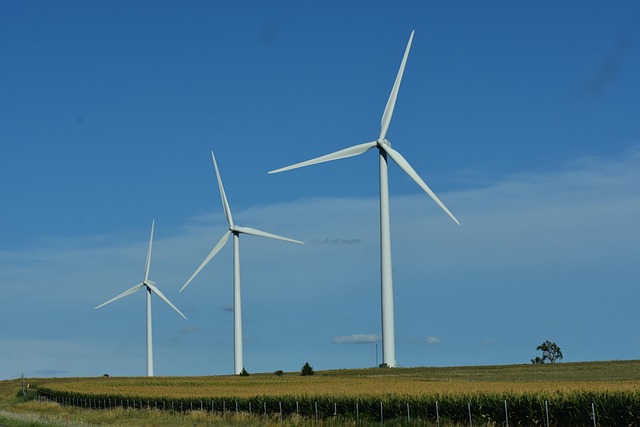Beyond Fossils: Innovative Technologies in Renewable Power
The world is experiencing an unprecedented energy transition as the dire consequences of climate change become more evident. Fossil fuels, while historically the cornerstone of modern energy consumption, are giving way to a new paradigm built upon renewable energy sources. As we seek to reduce our carbon footprint and mitigate climate change, innovative technologies are emerging to harness the power of nature in more efficient and effective ways. This article aims to delve into the exciting advancements in renewable power technologies, exploring how they are transforming our energy landscape beyond traditional fossil fuels.
The Renewable Energy Landscape
Renewable energy encompasses a variety of sources, including solar, wind, hydro, geothermal, and biomass. Each of these sources has unique characteristics and applications, making them suitable for different environments and energy needs. Over the past few years, advancements in technology have dramatically increased the feasibility and efficiency of these renewable resources through innovations in energy capture, storage, and distribution.
Solar Power Innovations
Solar energy remains one of the most accessible forms of renewable energy. Innovations in solar technology focus on improving efficiency, reducing costs, and expanding application possibilities.
Photovoltaic Cell Development
Photovoltaics (PV) convert sunlight directly into electricity through semiconductor materials. The efficiency of solar cells has improved significantly, with new materials such as perovskites showing great promise. These materials can potentially provide greater efficiency at a lower cost than traditional silicon-based solar cells. Research is also being conducted to develop tandem solar cells, combining different materials that can absorb various parts of the solar spectrum, thus maximizing energy conversion.
Bifacial Solar Panels
Bifacial solar panels are another breakthrough, allowing energy capture on both sides of the panel. This increases the amount of electricity generated as reflected sunlight from the ground can be absorbed, making them a more efficient choice for large-scale solar farms.
Floating Solar Farms
As land becomes more scarce, floating solar farms have emerged as an innovative solution. These installations allow solar panels to float on bodies of water, reducing evaporation and providing a suitable environment for solar generation without taking up valuable land space. Floating solar setups also help reduce water temperature, thereby improving aquatic ecosystems.
Wind Energy Advances
Wind power is one of the fastest-growing sources of renewable energy globally. Recent innovations are helping enhance wind energy capture and distribution, making it a more viable option for energy production.
Turbine Technology Development
The design and efficiency of wind turbines have undergone significant improvements. Modern turbines are taller and equipped with larger blades, allowing them to harness wind energy more effectively. Innovations like vertical-axis wind turbines (VAWTs) are also gaining traction for their ability to operate in turbulent wind conditions and their reduced impact on wildlife.
Offshore Wind Farms
Offshore wind farms represent a notable shift in wind energy utilization. With higher and more consistent wind speeds over the open ocean, these farms can produce significantly more energy than their land-based counterparts. Moreover, advancements in construction and maritime technologies have made it increasingly feasible to install and maintain offshore turbines.
Hydropower Evolution
Hydropower has long been regarded as a reliable source of renewable energy; however, environmental concerns and sustainability challenges have prompted the exploration of innovative approaches.
Micro and Pico Hydropower Systems
Micro-hydropower systems enable energy generation on a smaller scale, providing off-grid solutions for rural communities and individual households. These systems can utilize small streams or rivers without requiring the significant environmental impact of traditional large-scale dams.
Hydrokinetic Energy
Hydrokinetic energy involves capturing the kinetic energy from flowing water, such as rivers and tidal flows, without the need for large dams. Innovative technologies, such as underwater turbines, are being developed to harness this energy efficiently. This approach reduces ecological disruptions while contributing to renewable energy generation.
Geothermal Energy Breakthroughs
Geothermal energy harnesses the heat from the Earth’s interior, presenting a constant and reliable power source. Innovations in geothermal technology are making it more accessible and efficient.
Enhanced Geothermal Systems (EGS)
Enhanced geothermal systems involve engineering techniques to extract heat from rocks that are not traditionally accessible. By injecting water into hot, dry rocks, it creates steam that can be harnessed to generate electricity. This technology allows geothermal energy to be harvested in a wider range of locations, moving beyond the traditionally volcanic areas.
Closed-Loop Systems
Closed-loop geothermal systems utilize a sealed pipe system to circulate water or another heat-transfer fluid in the ground, improving energy capture without depleting subsurface resources. This method can significantly reduce the environmental footprint associated with geothermal energy extraction.
Biomass Energy Innovations
Biomass energy, originating from organic materials, has significant potential for sustainable energy production. Innovations in biomass technology focus on efficiency and waste reduction.
Advanced Biofuels
New developments in biofuel production aim to create fuels from non-food crops, algae, and agricultural waste. These advanced biofuels have the potential to reduce competition for food resources while providing more sustainable alternatives to fossil fuels.
Biomass Conversion Technologies
Innovative conversion technologies, such as gasification and pyrolysis, are transforming biomass into gas and liquid fuels more efficiently. These processes enable the recycling of waste materials into usable energy, contributing to both energy production and waste management solutions.
The Role of Energy Storage Technologies
A significant challenge inherent to renewable energy sources is their intermittent nature. The dependence on environmental conditions, such as sunlight and wind, necessitates advancements in energy storage solutions to ensure a consistent power supply.
Batteries and Beyond
Energy storage technologies, particularly battery systems, have seen significant innovations in recent years. Traditional lithium-ion batteries are becoming more efficient and affordable, but emerging battery technologies show promise for further enhancements.
Solid-State Batteries
Solid-state batteries are touted as the next generation of energy storage, using a solid electrolyte instead of a liquid one. This design can increase battery capacity, reduce the risk of fires, and extend the lifespan of the batteries, making them suitable for large-scale energy storage applications.
Pumped Hydro Storage
Pumped hydro storage remains one of the most widely used forms of energy storage. This method leverages the gravitational potential energy of water by pumping it uphill during periods of low energy demand and releasing it to generate electricity when demand is high. Innovations in materials and efficiency are enhancing its viability and capacity.
Grid Modernization and Smart Technology
Modernizing the energy grid is essential to accommodate renewable energy sources effectively. Smart technology, including the Internet of Things (IoT), is playing a crucial role in optimizing energy distribution and consumption.
Smart Grids
Smart grids enhance energy efficiency by using data analytics and automated systems to manage energy flow. They enable real-time monitoring, allowing for quicker responses to fluctuations in energy supply and demand, thus facilitating the integration of variable renewable sources like wind and solar power.
Distributed Energy Resources (DER) and Microgrids
The rise of distributed energy resources (DER), such as solar panels and local wind turbines, can significantly change the dynamics of energy distribution. Microgrids, which can operate independently of the larger grid, allow communities to generate, store, and use energy more efficiently. These systems enhance energy resilience and integrate renewable sources more seamlessly into local infrastructures.
The Path Forward
The transition from fossil fuels to renewable energy sources is imperative for a sustainable future. Innovative technologies are paving the way for a cleaner, more efficient energy landscape, helping to mitigate the impacts of climate change and reduce dependence on non-renewable resources.
However, realizing the full potential of these technologies will require support from policymakers, businesses, and consumers alike. Investment in research and development, infrastructure, and education will be crucial in overcoming barriers and ensuring that renewable energy technologies can thrive.
Moreover, as we refine our approaches to renewable energy, it is essential to foster public awareness and understanding of these technologies. Empowering individuals and communities with knowledge about renewable energy options can facilitate broader adoption and encourage grassroots movements for sustainability.
Only through collective efforts can we fully embrace the innovative technologies that are transforming the energy landscape, leading us toward a future that is sustainable, resilient, and free from the constraints of fossil fuels.



